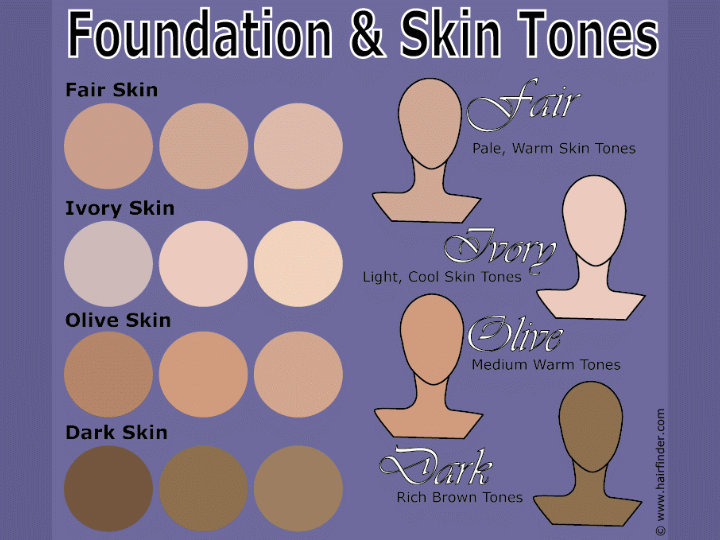Foundation Application

Foundation make-up was developed to create a smooth, even canvas upon which other cosmetics could be applied and give the face an enhanced appearance. Since many women quote their problems as being that their skin is often uneven in tone and has blemishes or spots of varying types, foundation has become a staple in most cosmetic kits.
Foundation can even out skin tone, soften the appearance of lines and wrinkles, minimize the appearance of age spots and freckles and can even protect from sun damage when the right formula is used.
Foundation typically offers two types of finish: dewy and matte. The dewy finish is generally for those dry skin types to provide a soft glow to the skin, making it look youthful and healthy. Matte finish is typically used for those who have the common signs of aging - those fine lines and wrinkles that form around the eyes and mouth. It softens the look of these lines and helps to create a younger-looking appearance.
Skin Tone and Matching
The most difficult part of selecting foundations is often matching the skin tone with the tone of foundation. Too often, women end up selecting a foundation that is too light or too dark for their actual skin tone. This results in a noticeable transition from make-up to bare skin where the cosmetic ends. Some blending can help camouflage this effect, but it is better to avoid the discrepancy from the start.
To get a sense of the skin tones we're talking about let's discuss the various skin tone categories and what makes them unique:
Fair Skin:
Fair skin is generally characterized by the paleness of the skin and its sensitivity to the sun. Fair skin is susceptible to freckling and other sun-exposure effects and is often. In color tone it is generally warm and often pinkish. It is obvious when the individual blushes. Famous fair-skinned individuals include Audrey Hepburn and Claudia Schiffer.
Ivory Skin:
Ivory skin tone is often very similar to Fair skin in appearance, but Ivory skin tones tend to be cooler. They are often as sun-sensitive as fair-skinned individuals, but not always. Ivory skinned individuals also often have a translucent quality to the skin. Famous ivory-skinned individuals include Glenn Close and David Hyde-Pierce.
Olive Skin:
Olive skin is typically warm in tone and darker than either fair or ivory skin. Olive skin tones generally respond to sun exposure by tanning, which deepens the color of the skin. The result is a bronzer shade of the Olive complexion. Famous olive-skinned individuals include Vin Deisel and Eva Longoria.
Dark Skin:
Dark skin is a category that has perhaps the broadest range of shades included within it. It can range from a light nutty, brown to a near-black ebony shade. In the cases of dark skin types, common skin problems can take on a different appearance. Dry skin can cause the skin to look ashen, while oily skin and breakouts look like darkened bumps, rather than redness.
Dealing with Skin Issues
When matching your foundation to your skin type, your goal is for the foundation to "disappear" on the skin, leaving no obvious signs of application. The foundation should give an even result in the appearance of the skin, blending and balancing any unevenness in the shades of the skin.
For individuals who have oily skin, who have wrinkles or large, obvious pores, then a matte finish foundation is ideal. Look for foundations that offer a powdery finish, or a mineral powder cosmetic. The flat finish offered by these products helps to minimize the appearance of fine lines and pores by softening the overall appearance of the face and features.
For those individuals who have dry skin, choose foundation with moisturizers which will help the skin keep the healthy glow and youthful texture while combating the dryness.
Sometimes there are individuals whose skin tone is between the available shade of foundation. If you are one of those people, do not hesitate to purchase the two closest shades (one on either side of your color) and blend them to make the correct shade for you. It will cost you twice as much as a single package of foundation, but it will last you twice as long as well.
Concealer
In the subset of foundation products are what are called concealers. These cosmetics are used to completely cover up marks, scars and blemishes that are otherwise not obscured by the foundation cosmetic. Concealers come in a range of shades - generally lighter than foundations - and are meant to be applied to the skin before foundation cosmetics. The foundation is then able to cover the undesired element and give a more even coverage and appearance.
©Hairfinder.com
See also:
Make-up How To
Blusher and Contouring